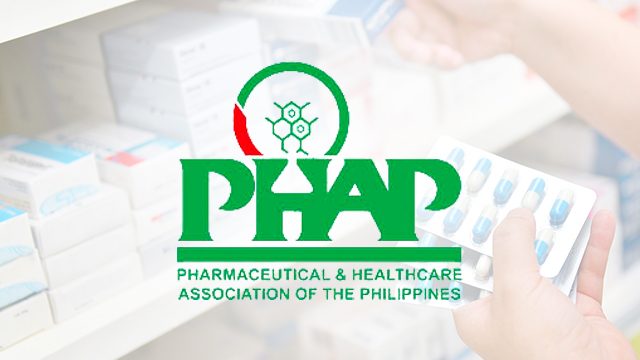SUMMARY
This is AI generated summarization, which may have errors. For context, always refer to the full article.

MANILA, Philippines – At least 18 multinational pharmaceutical companies are in talks with the Department of Health (DOH) to reduce prices of drugs for “major non-communicable diseases, infectious diseases, and rare disorders” like diabetes and high blood pressure.
In a statement Thursday, October 24, Pharmaceutical and Healthcare Association of the Philippines (PHAP) said some members met with DOH Secretary Francisco Duque III and patient organizations earlier this week to discuss lowering medicine prices.
“We will announce these initiatives as soon as we work out the partnership details with the DOH,” said PHAP executive director Teodoro Padilla.
PHAP also said its members would offer medical assistance programs for more “holistic and comprehensive assistance” to patients. These programs would assist patients from diagnosis, to treatment, to monitoring. PHAP members include multinational companies like GSK, Pfizer, Sanofi, and Zuellig Pharma.
This initiative comes nearly a month after the DOH announced it would recommend imposing maximum drug retail prices (MDRP) on 120 medicines. (READ: WHO agrees to watered down resolution for clearer drug prices)
Under the MDRP scheme, prices are expected to have a mean price reduction of 56% from prevailing market prices. For example, if a particular drug typically costs around P100, with the imposed MDRP, it would cost around P44 on average.
The DOH said the scheme would cover medicines for hypertension, diabetes, cardiovascular disease, chronic lung diseases, neonatal diseases, major cancers, as well as chronic renal disease, psoriasis, and rheumatoid arthritis.
But the executive director of the pharma group said government hospitals, not lower prices, would solve the problem of high prices.
“Government hospitals, not price control, are the solution in helping the public reduce their medicine costs. The issue that needs to be addressed is how to make supplies last and how to make them more available through other outlets,” Padilla said.
“If government hospitals and pharmacies could offer more of these cheaper medicines to more people in more areas, the country would be able to somehow catch up with its neighbors in terms of healthcare participation,” the group added.
According to PHAP, price control may even be “ineffective, counter-productive, and unsustainable,” proposing instead that the government partner with private companies to help with citizen’s medical expenses.
DOH and PHAP alike have pointed out how the Philippines lags behind its Southeast Asian neighbors in terms of affordable medicines and health care.
“The Philippines is still paying higher prices when compared internationally. Generic drugs are still sold up to 4 times the international reference prices whereas branded innovator products are sold up to 22 times higher, especially in private hospitals and pharmacies,” the DOH said in a September statement. (READ: DOH in 2017: Focus on universal health coverage, lowering drug prices)
Filipinos also pay about 54% of their own health care costs, according to PHAP. This is higher than Thailand’s 12%, Malaysia’s 38%, and Indonesia’s 37%. – Rappler.com
Add a comment
How does this make you feel?
There are no comments yet. Add your comment to start the conversation.